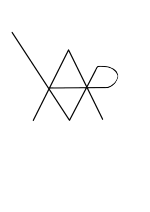Rainer Voltmann > Photogravure
Photogravure
The History:
Based on the discovery of photography (Joseph Nicephore Niepce), in 1852 Henry Fox Talbot developed the first good and fast working system of Photogravure. By Karl Klic this fine printing process has his highest popularity in 1879. Because of the further development from other print methods, to faster and cheaper printing processes, the sophisticated print method Photogravure become to be forgotten.*
Technique:
By analog photography a halftone positiv film for copy was used.
Now, in the digital age, we use for copy among other things a jpg, which is printed with an high-resolution printer on a special sheet film.
The special sheet film (halftone positiv film) will be exposed on a sensitised paper.** Then the paper will be soften up in an cold waterbath and crimped up on a copperplate or steel plate.***
In a warm waterbath the paper will be detach and the underexposed and different tanned sections from the gelatine will be washed out.****
On the plate stays a soft gelatine relief. After drying time the plate will be etched in different concentrated iron chloride baths. Water content and temperature are decisive parts.
The water content in the chloride bath has the property to dissolve the different tanned parts and to clear the copperplate.
Different etching times and the grain size of Aquatint enable the representation real continuous tones.
* Source: Josef Maria Eder: „Ausführliches Handbuch der Fotografie 1896“
** The pigment paper exists out of a release paper with gelatine charged with an ferric oxide.
The ferric oxide affects the contrast and the sensitivity of the pigment paper and provides a clear view on the motive.
The Sensitising of the pigment paper happens in potassic-dichromate bath. The concentration and the length of the bath affect the sensitivity of the gelatine. Exposure time and etching duration are dependent off this.
*** The aquatint is especially fine. Fineness and concentration affect the appearance of the print.
The disadvantage of this superfine aquatint is that it is not possible to print high editions.
**** At the exposure there are different continuous tones which are tanned after the original.


